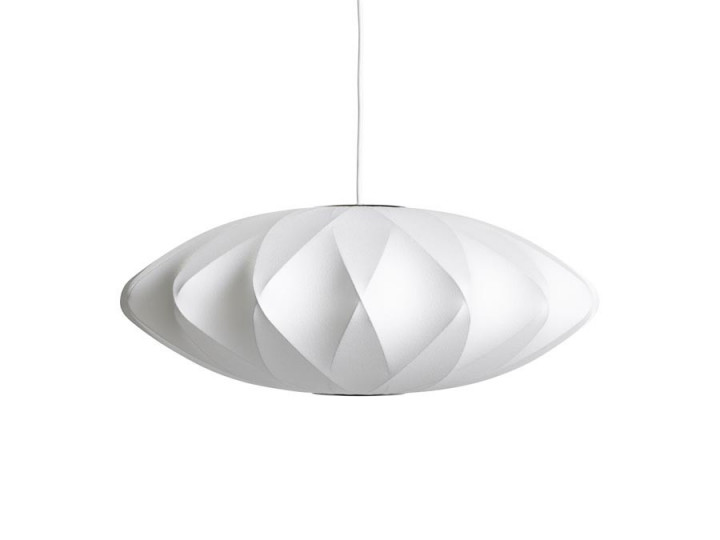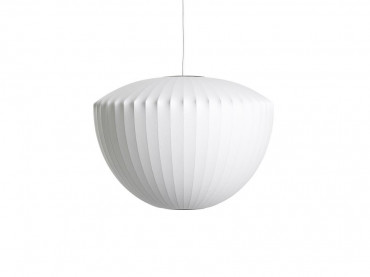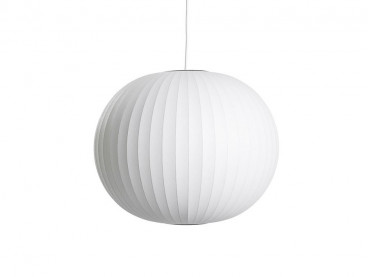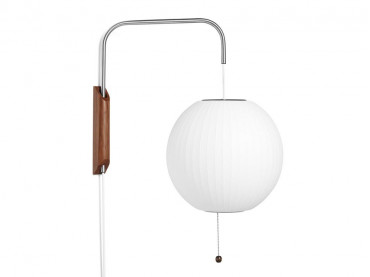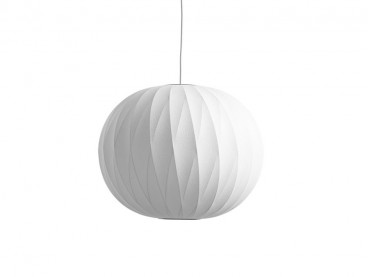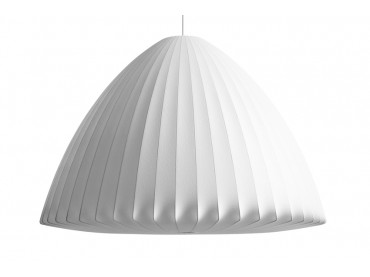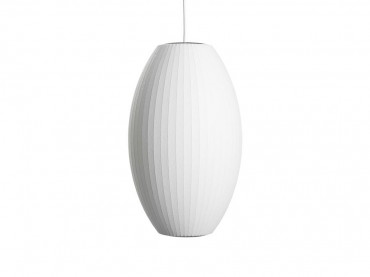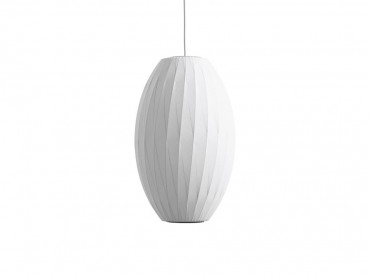Nelson Saucer Crisscross Bubble Pendant 2 size. New edition
-
George Nelson
-
HAY
- HAY112 Delivery time 8-10 weeks
Nelson Saucer Crisscross Bubble Pendant 2 size. New edition *Required step
In order to help you to choose, and to receive samples, do not hesitate to contact us by email: contact@galerie-mobler.com or by phone: 01 43 33 20 12
Designed by pioneering American designer George Nelson in 1947, and first produced in 1952, the Bubble Lamp signaled a revolution in the Modernist lighting industry. Available in an assortment of organic sizes and shapes, these elegant orbs were inspired by a set of silk-covered Swedish pendant lamps Nelson wanted for his office, but found to be too expensive. Employing the resourcefulness that characterized his working process, he decided to use a self-webbing plastic spray developed by the U.S. military, and applied it over a lightweight, rounded-steel frame to produce these soft, glowing fixtures. The Nelson Ball Bubble Pendant is a full, perfectly round sphere that fills any interior with a warm, diffused light. A steel ceiling plate allows it to delicately float overhead. The Danish manufacturer Hay has been reissuing them since 2019.
The Nelson Ball Bubble suspension diffuses a warm and soft light.
The collection includes Ball, Cigar, Saucer, Apple, Bell, Propeller and Lantern models, in several sizes, and "Crisscross" finishes and sconces.
Electrical systems have been brought up to current standards.
| Year | 1952 |
| Dimensions | Ø44,5 x H19 cm / Ø63,5 x H24 cm |
| Material | Webbing polymer shade. Coated and brushed metal frame top and bottom ring. Cable with white PVC isolation. LIGHT SOURCE / E27 |
| Style | Classique Neuf |
| Origin | US/Denmark |
| Fournisseur | HAY |
George Nelson
“Design is a response to social change.”— George Nelson.
Born in Connecticut, USA, George Nelson (1908-1986) was one of the most influential figures in the crucial early period of modern design. Trained at Yale as an architect and a fine artist, he believed that a designer’s job was to better the world, using the perfection of nature’s creations as his guide. Two formative years in Rome following his receipt of the prestigious Rome Prize brought him into contact with the world’s leading modernists, including Le Corbusier, Mies Van der Rohe, Walter Gropius, Gio Ponti, and many others, and helped shape his career as a writer and industrial designer, who would change the course of history.

